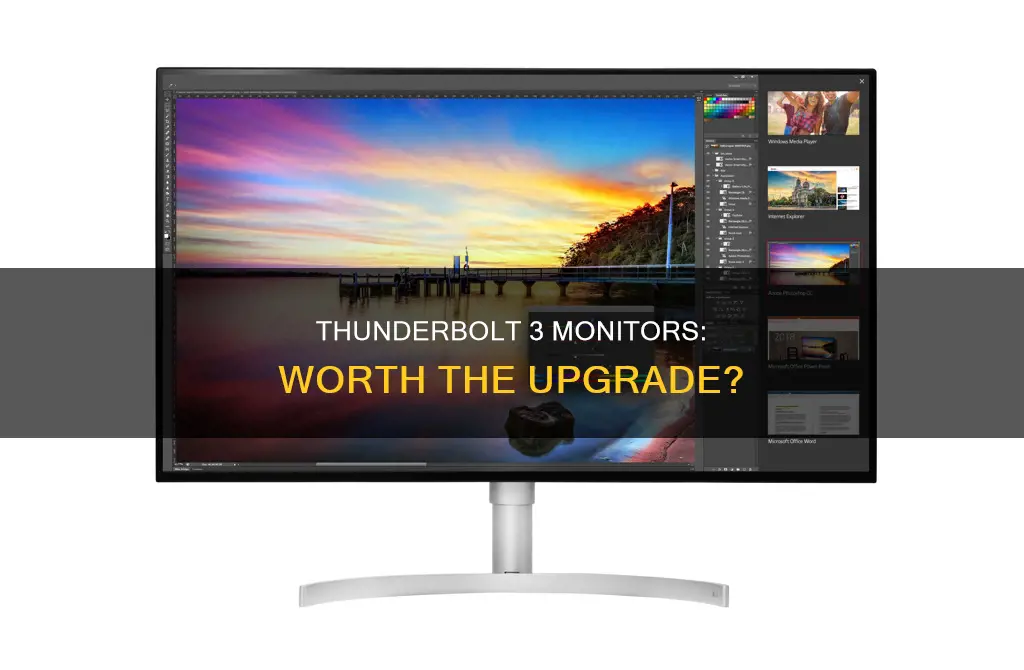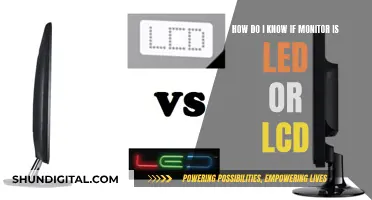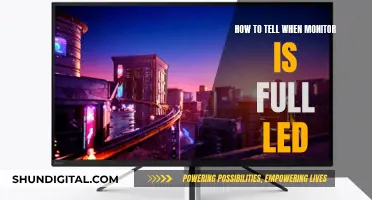
Thunderbolt 3 is an advanced connectivity standard developed by Intel that offers 40 Gbps bandwidth over a single cable. This is twice the speed of Thunderbolt 2 and four times that of USB 3.1 Gen 2. With its high-speed connectivity and charging capabilities, Thunderbolt 3 is becoming increasingly common on PCs and laptops, making it a desirable feature for monitors.
Thunderbolt 3 monitors offer a range of benefits, including high-resolution images, high-speed data transfers, and seamless compatibility with Mac devices. They are particularly useful for professionals in fields such as video editing, photography, and 3D graphics rendering, who require high-performance workstations.
However, there are also some drawbacks to consider. Thunderbolt displays tend to be more expensive than traditional HDMI or DisplayPort monitors, and there is a limited selection available on the market. Additionally, Thunderbolt cables can be more expensive and may not always provide stable connections.
Ultimately, the decision to purchase a Thunderbolt 3 monitor depends on individual needs and preferences. While they offer significant advantages in terms of speed and connectivity, they may not be a necessary investment for everyone.
| Characteristics | Values |
|---|---|
| Display Size | 27", 28, 32", 34", 38", 40", 49" |
| Refresh Rate | 60Hz, 72Hz, 75Hz, 100Hz, 120Hz, 144Hz |
| Resolution | 4K UHD 2160p, 5K2K, 5K UHD 2160p, WQHD 1440p, QHD 1440p, FHD 1080p |
| Response Time | 1ms, 2ms, 4ms, 5ms, 8ms |
| Ports | USB-C, USB-A, USB 3.0, USB 3.1, USB 3.2, HDMI, HDMI 2.0, HDMI 2.1, DisplayPort, DisplayPort 1.2, DisplayPort 1.4, Thunderbolt 3, Thunderbolt 4 |
| Power Delivery | 15W, 27W, 45W, 65W, 85W, 90W, 92W, 94W, 96W, 100W, 140W, 165W |
| Other Features | AMD FreeSync, NVIDIA G-SYNC, HDR, HDR10, HDR400, HDR1400, VESA DisplayHDR 400, VESA mount, built-in speakers, KVM switch, KVM functionality, daisy-chaining |
What You'll Learn

Thunderbolt 3 vs USB-C
Thunderbolt 3 and USB-C are two different technologies with distinct capabilities and use cases. While they share some similarities, such as the same connector type and cross-compatibility, there are several key differences to consider when deciding between the two.
Thunderbolt 3:
Thunderbolt 3 is a hardware interface standard developed by Apple and Intel, offering high-speed data transfer rates of up to 40Gbps. It builds upon the capabilities of USB-C, providing faster transfer speeds, bidirectional data transfer, and the ability to daisy-chain multiple devices without separate power sources. Thunderbolt 3 supports a wide range of adapters and protocols, including USB-C to DisplayPort adapters, allowing users to connect dual 4K monitors or a single 5K monitor. It also enables the use of powered docking stations and external graphics processing units (eGPU) for enhanced graphics performance. Thunderbolt 3 has a default charging speed of 15 watts but can deliver up to 100 watts with USB Power Delivery (USB PD).
USB-C:
USB-C, or Universal Serial Bus Type-C, is the most modern version of the USB standard. It features an oval-shaped, symmetrical connector that eliminates the hassle of plug orientation. USB-C cables can transmit both power and data, making them versatile for charging, data transfer, and display connectivity. The standard USB-C connector is smaller than its predecessors, making it compatible with smartphones and other compact devices. USB-C has three main specifications: USB 3.2 Gen 1 (up to 5Gbps), USB 3.2 Gen 2 (up to 10Gbps), and USB 3.2 Gen 2x2 (up to 20Gbps). The default charging speed of a USB-C cable is 2.5 watts, but many devices support USB PD, enabling charging speeds of up to 100 watts.
Key Differences:
The main difference between Thunderbolt 3 and USB-C lies in their data transfer speeds. Thunderbolt 3 offers significantly faster speeds, making it ideal for transferring large files, such as videos, and supporting multiple high-resolution displays. Thunderbolt 3 is better suited for intensive, creative workflows and peripheral connections. On the other hand, USB-C is widely adopted and compatible with a vast range of devices. It is suitable for everyday tasks, quick setups, and universal compatibility. USB-C is also more affordable than Thunderbolt 3, which tends to be more expensive due to its proprietary Intel technology.
Monitoring Electricity Usage: A Guide to Tracking Your Power Consumption
You may want to see also

Thunderbolt for video and data
Thunderbolt is a hardware interface for connecting external peripherals to a computer. It was developed by Intel in collaboration with Apple and first sold in 2011. Thunderbolt combines PCI Express (PCIe) and DisplayPort (DP) into two serial signals, and also provides power via a single cable.
Video
Thunderbolt supports video signals through its DisplayPort component. When transmitting video signals over USB-C, the DisplayPort alt mode is used. This takes either two or all four lanes available in the USB-C cable to transfer video signals depending on the resolution, refresh rate, and colour depth required. For example, transmitting 4K video at 30Hz requires two lanes, leaving the other two lanes available for USB 3.1 Gen 2 data transfer up to 10 Gbps. Thunderbolt 3, however, can drive a 4K monitor at 10-bit colour 60Hz, requiring around 15Gbps of bandwidth, and still have 25 Gbps available to send data to other devices.
Data
Thunderbolt's PCI Express component enables high-speed data transfer. Thunderbolt 3 offers 40 Gbps bandwidth over a single cable, compared to USB 3.1 Gen 1 which offers only 5 Gbps, and USB 3.1 Gen 2 which offers 10 Gbps. Thunderbolt 3's bandwidth is bidirectional, meaning the full 40Gbps remains available for receiving data from devices to the computer.
Daisy-Chaining
Thunderbolt's ability to daisy-chain devices is one of its key advantages. A single Thunderbolt 3 port can support up to six Thunderbolt devices via hubs or daisy chains, and can also support USB devices. Daisy-chaining allows users to connect multiple devices through a single Thunderbolt port on their computer, reducing cable clutter and simplifying setup.
Choosing the Right Rope Size for Monitor Windvane
You may want to see also

Thunderbolt monitors for Mac
Thunderbolt 3 monitors offer a range of benefits for Mac users, including increased speed, simplified connectivity, and support for high-resolution displays. Here are some key considerations when choosing a Thunderbolt monitor for your Mac:
Image Quality
Thunderbolt 3 supports high-resolution displays, delivering sharp and detailed images. Look for monitors with 4K or higher resolutions to take full advantage of the technology.
Connectivity
Thunderbolt 3 provides a simple and clean cabling solution, requiring just one cable for both power and data transfer. This makes it easier to connect your Mac to the monitor and reduces cable clutter. Additionally, Thunderbolt-enabled displays often serve as USB hubs, allowing you to connect multiple devices through a single cable.
Future-Proofing
Thunderbolt is becoming increasingly common, and investing in a Thunderbolt 3 monitor now can future-proof your setup. As more manufacturers adopt the technology, prices may start to come down.
Cost
One of the biggest drawbacks of Thunderbolt displays is their cost. They tend to be more expensive than traditional HDMI or DisplayPort monitors. However, as Thunderbolt becomes more widespread, prices may start to come down.
BenQ DesignVue PD3220U
This 32-inch 4K monitor offers full Thunderbolt 3 connectivity, including display daisy chaining. It has excellent colour accuracy and coverage, with 95% of the DCI-P3 gamut. It also features a slim-bezel design that complements the aesthetics of your Mac.
Dell UltraSharp U2723QE
If you're looking for a more budget-friendly option, the Dell UltraSharp U2723QE is a great choice. This 27-inch 4K monitor offers USB-C connectivity with device charging, enabling single-cable docking support. It also has a range of ports, including DisplayPort, HDMI, and USB-A.
Apple Studio Display
For a monitor designed specifically for Mac, consider the Apple Studio Display. This 27-inch 5K monitor delivers Retina-style pixel density for crisp text and images. It includes a webcam, speakers, Thunderbolt 3, and three USB-C ports. However, it is a pricey option.
Dell UltraSharp 32 6K U3224KB
If you're looking for an even higher resolution, the Dell UltraSharp 32 6K U3224KB offers stunning image quality with its 6K panel. It also has excellent connectivity, including Thunderbolt, display daisy chaining, a USB hub, Ethernet, and more.
AOC CU34G2X
For an ultrawide option, consider the AOC CU34G2X. This 34-inch curved monitor offers a high-performance viewing experience at a budget-friendly price. It has a modern, frameless design and good connectivity options, including HDMI and DisplayPort.
These recommendations provide a range of choices depending on your specific needs and budget. Thunderbolt 3 monitors offer enhanced connectivity, speed, and support for high-resolution displays, making them a great choice for Mac users.
Asus Monitor Bluetooth: Is It Built-In or Not?
You may want to see also

Thunderbolt 3 cable issues
Thunderbolt 3 cables are prone to several issues. Firstly, they are often confused with USB-C cables as they look identical, but they are manufactured and tested to different specifications. Using a USB-C cable to connect a Thunderbolt 3 device will result in an error message.
Thunderbolt 3 cables are also known to fail due to inadequate stress relief around the connector, which can cause broken or intermittent connections and lead to slow data transfer rates and potential data loss. This is a particular issue with Apple OEM cables, which are reportedly manufactured by Monster. The stress relief issue can be mitigated by minimising stress at the entry point to the connector when moving a laptop with the Thunderbolt cable attached.
Thunderbolt 3 cables are also sensitive to bending, with reports of cables failing when bent at sharp angles. This is because there are chips embedded at each end of the cable, which can be damaged by bending or man-handling.
Finally, some users have reported issues with the protective coating on Thunderbolt 3 cables gradually ripping off, exposing the shielding screen and rendering the cable non-functional.
LCD vs CRT: Which Monitor is Greener?
You may want to see also

Thunderbolt 3 monitors for gaming
Thunderbolt 3 monitors offer a range of benefits for gamers, including high-speed connectivity, charging capabilities, and support for high-resolution displays. While they tend to be more expensive than other options, they are a good choice for future-proofing your setup. Here are some of the best options available:
LG 38WN95C-W 38" Ultrawide Monitor
This monitor offers a large, immersive display with a 3840 x 1600 resolution and a 144Hz refresh rate. It has a 1ms response time and supports both NVIDIA G-SYNC and AMD FreeSync for tear-free gaming. The Thunderbolt 3 port provides 94W of power delivery, and there are also two HDMI 2.0 ports, two downstream USB 3.0 ports, and dual 5W integrated speakers.
Dell U4025QW 40" Ultrawide Monitor
The Dell U4025QW is a great choice if you're looking for a larger display with a high resolution. It features a 5120 x 2160 resolution, a 120Hz refresh rate, and a fast response time. The Thunderbolt 3 port provides an impressive 140W of power delivery, and there are also five USB-C and three USB-A ports. This monitor also includes a KVM switch for easy multitasking.
Samsung ViewFinity S65TC 34" Ultrawide Monitor
For a more affordable option, the Samsung ViewFinity S65TC offers a 3440 x 1440 resolution, a 100Hz refresh rate, and a 4ms response time. It supports AMD FreeSync and includes built-in speakers. In addition to Thunderbolt 4, it also has HDMI and DisplayPort connections.
Acer Nitro XV275K P3biipruzx 27" Monitor
While this monitor doesn't have Thunderbolt 3, it offers a similar experience with its USB-C port, which provides 90W of power delivery and supports DisplayPort Alt Mode. The 4K resolution and high brightness make it a great choice for gaming, and it also has two USB-A ports for connecting peripherals.
BenQ PD2725U 27" 4K Monitor
The BenQ PD2725U is designed specifically for Mac users, offering a Thunderbolt 3 port with 65W of power delivery. It has a 5ms response time and a 60Hz refresh rate, which is suitable for casual gaming. The monitor covers 100% of the Rec.709 and sRGB color spaces and includes a Pantone colour calibration report.
Finding the Headphone Jack on Your ASUS Monitor
You may want to see also







